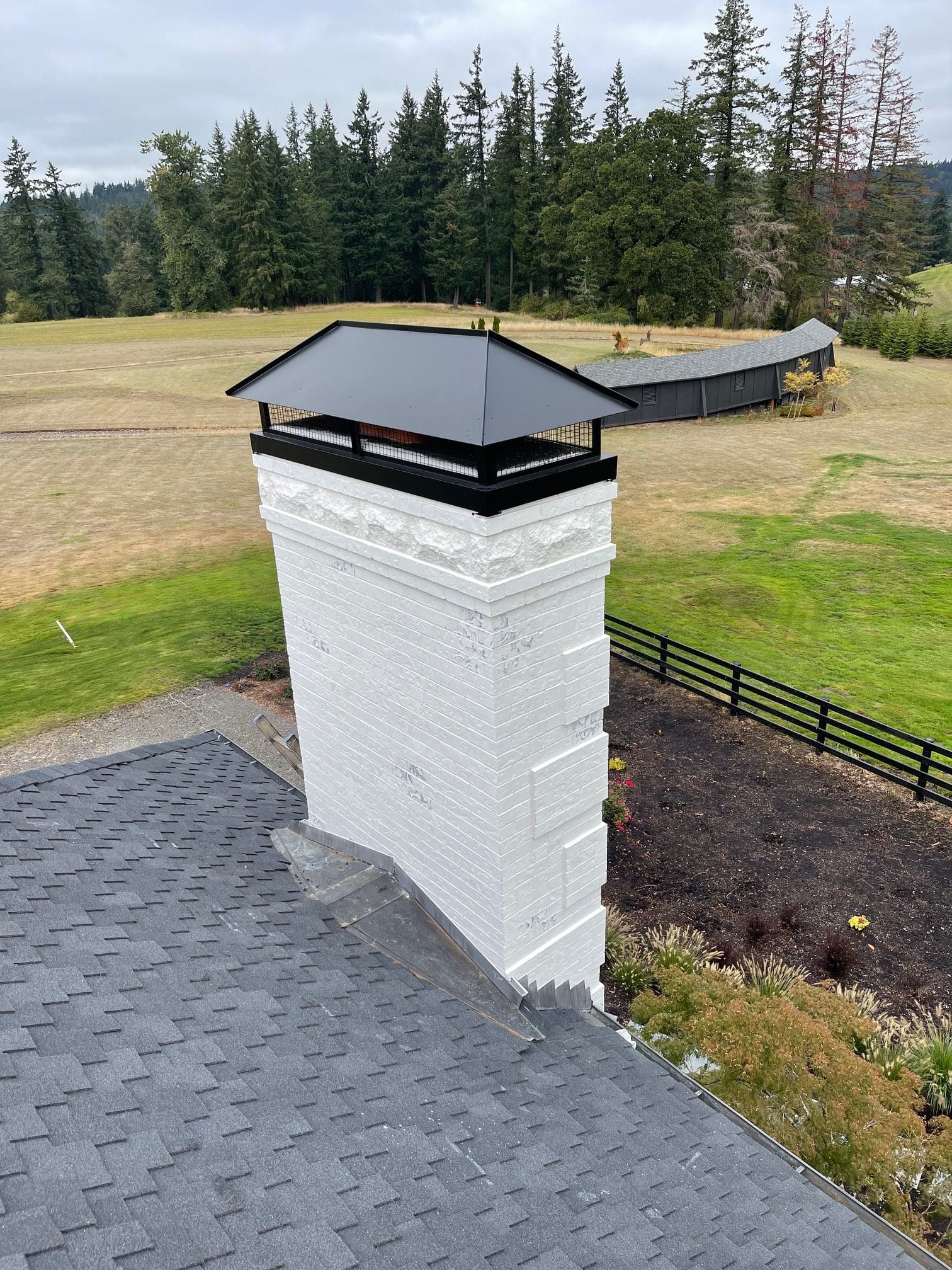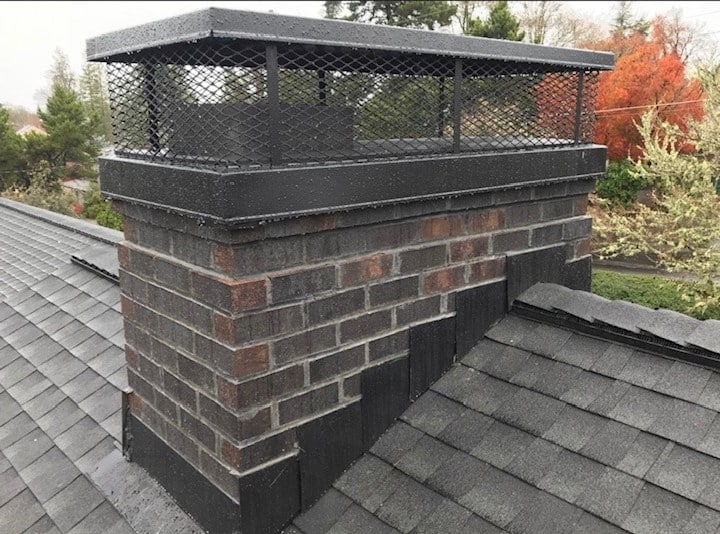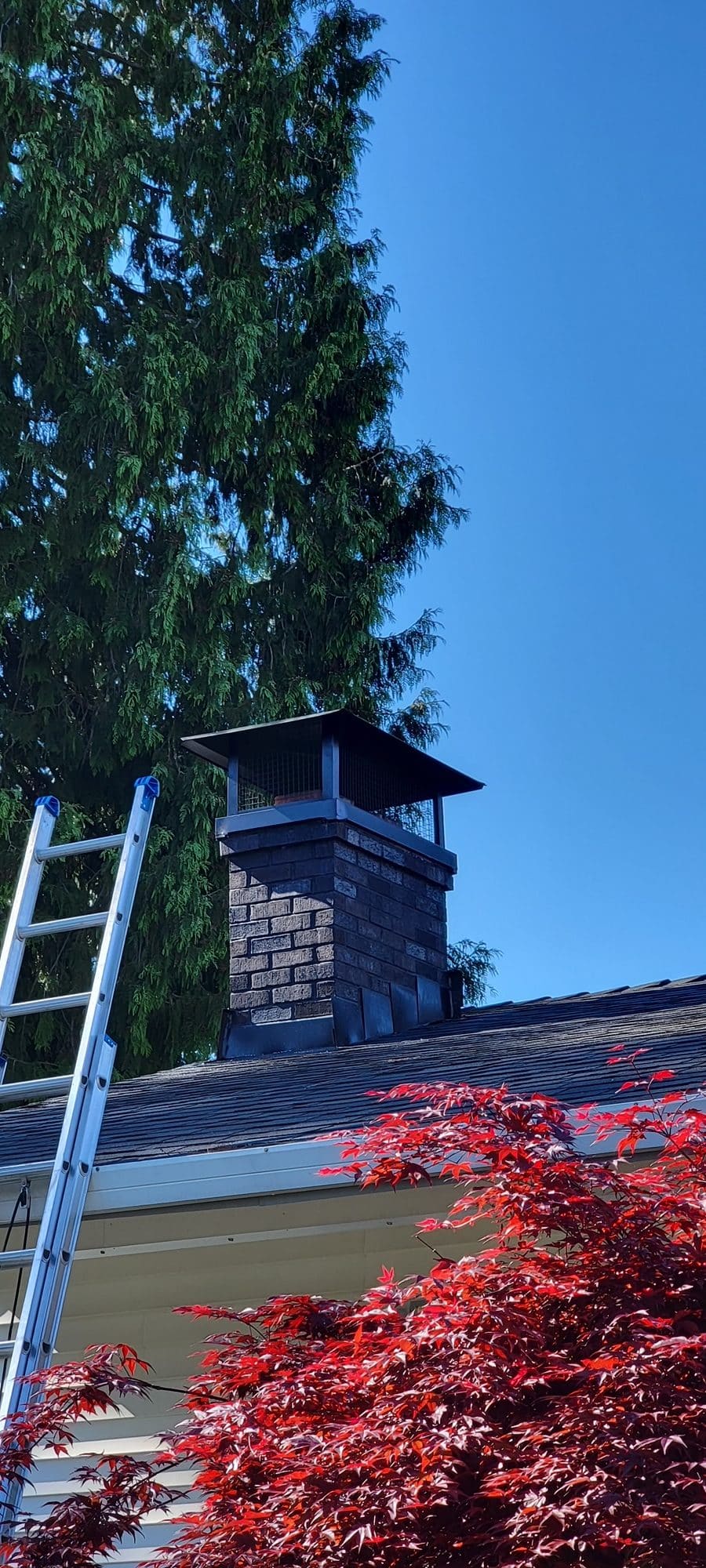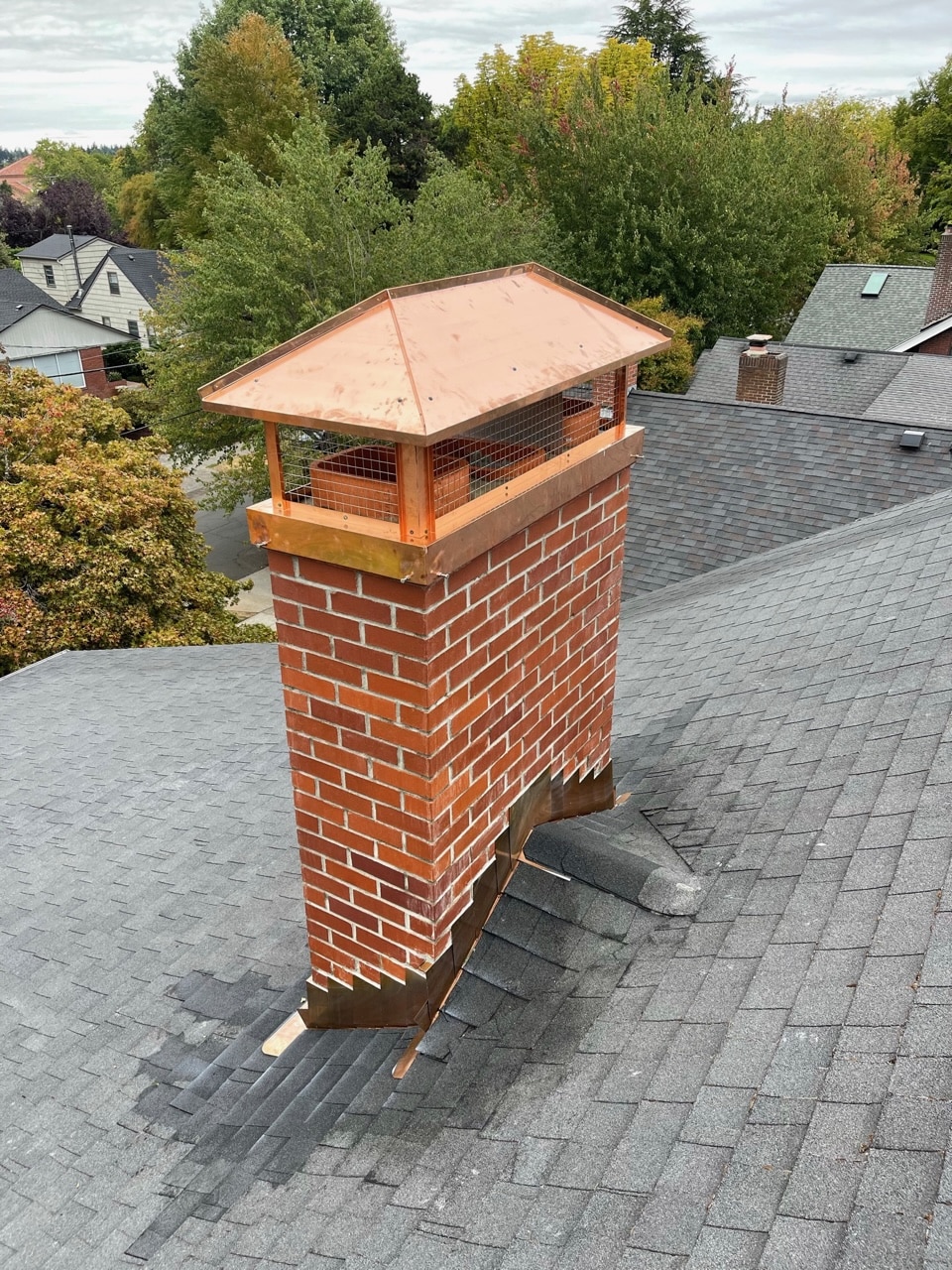We get all kinds of requests for chimney repairs. Almost every time our customers think they know what they need. A “Chimney Repair, a tuck-point repair, a repointing repair, a pointing repair, a crown repair, a crown wash, a new crown, new masonry counter flashing repair.”
I believe most get these terms when they buy their home. A home inspector (if they are a good one) will get on the roof and check out the masonry chimney structure. They are looking for cracks. Cracks in the crown, cracks in the mortar between the bricks, gaps in the flashing that waterproofs the chimney to roof penetration. Oftentimes these cracks are just the tip of the iceberg. Then the home inspector will say things in the report like. This chimney crown needs pointing repairs to the cracks in the crown and in the mortar.
What is a chimney repair? What is pointing? How do I define it?
A chimney repair can be a multitude of these things. It can be any form of repair, but the defining terms that create confusion is when cracks are repaired by the tuck-point method or the rebuild method.
I am going to help everyone get a clearer understanding of what those two things are and how they are different.

So, what is tuckpointing and how does Portland Fireplace & Chimney determine if a chimney can be tuck-pointed?
Tuckpointing includes grinding out mortar joints between bricks or stones that have surface fragmentation and imperfections. A mortar joint is 4 inches thick of a bond between the bricks or stones.
When we do tuckpointing repairs, we use high-powered grinders with diamond blades to cut out cracked and fragmented mortar. We have a special vacuum and grinder attachment we use during the grinding that keeps the dust from polluting the neighborhood. The last thing that you want is to send a cloud of dust onto the neighboring property or car. We also use special pneumatic chisels that gently remove the mortar between stones.
Tuckpointing repairs the mortar joint 1″- 1 1/2″ in depth from the face of the brick or stone, to remove all the loose, cracking, fragmented mortar at the surface. Then we are inspecting the condition of the mortar remaining in the structure after the surface layer has been ground out to the depth of 1 ½ inches.
The mortar remaining on the interior needs to be solid and structurally sound, this is crucial for tuck-point repairs to work well. The new mortar we mix up and squeeze into the joints between the bricks needs to be able to properly bond to an existing structurally sound mortar surface within the joint. If the mortar has water damage decay and rot past 1 ½ inches, then the chimney should not be tucked-pointed. This is because if you attempt to tuckpoint it, the new mortar will not bond to the existing unsound, water damaged mortar left inside the middle core of the mortar joint. What ends up happening is after a year or two the mortar joints that were just re-pointed into the chimney crack again, and start to fall out of the chimney onto the roof. This is a high percentage of our customers. They call and say we need you to fix our chimney correctly, the last company didn’t do a good job and the mortar color doesn’t even match and now it’s falling out again. Chemistry in mortar mix MATTERS! Now they are forced to address chimney repairs again. Because the previous tuck point repairs did not properly bond.

This also causes the brick faces to crack and spall apart when they use the wrong mortar mix that is too rich with Portland Cement.
Walk around your neighborhood and take a look at all the chimneys around. Then imagine if we had an earthquake. You will notice that many chimneys are leaning to the south. There are a lot of leaning chimneys out there and it’s due to poor tuck point repairs.
The winter sun warms up the south face of the chimney and causes it to expand, then the ice storms come and fill up the open areas with water. The sun goes down and temperatures drop below freezing turning all that water trapped in the masonry to ice. The ice expands the mortar again. This happens over and over and over. And the chimney starts to lean. This is when we see bricks actually fall off the tops of houses. Then God sends a high wind storm and blows off chimney caps taking loose bricks and mortar with it.

When a 4 inch thick mortar joint is water damaged beyond the 1 inch depth, the chimney should simply be rebuilt. It is a better value to take all the bricks down to the roofline and rebuild the chimney so that you can install all new mortar joints clear through the 4 inch thick mortar bed. This gives us a very strong chimney and product we can stand behind. In my eyes, this is a true Chimney Repair. Because it will stand the test of time and a homeowner will never have to address masonry chimney repairs again (if maintained properly with a custom cap and water seal). By removing all the rotten water damaged, inferior material, we are able to provide a superior product to the homeowner. This also guarantees no leaking will occur in the masonry.
Most chimneys need chimney repair because they do not have a proper sized chimney cap. A proper sized chimney cap is designed to adequately shelter and protect the full footprint of the chimney crown.

In my early years, I would install single flue Chimney Caps, these chimney caps just cover the termination or the hole/flue exit of the top of the chimney, and actually are too small for the PNW climate.
I made this realization by doing return annual service for my customers. Just one year prior I had installed a termination cap and returned to sweep the chimney, I got up on the roof, and I found that the chimney crown was cracked. The area that it was cracking was directly below the lip of the roof of the flue cap. I had an aha moment and made the connection. I had installed an inferior product which actually focalized the water from the roof of the chimney cap onto the top of the concrete chimney crown. And where that water was dripping, it impacted the concrete enough to crack it clear through in just one season. I no longer sell single flue termination caps because I learned this does not work for the PNW climate. The PNW has an extremely harsh climate for building materials. Just last year we had low temperatures in the 20s and high temperatures in the 100’s.
Through my 20 years experience I have got a clear understanding of building material science and have found that these building materials actually expand and contract and move quite a bit. This is why I take a holistic approach and aim to deliver a superior product to my homeowners. I want to offer a high quality, long lasting product so that people can save money in the long run and do the job correctly the first time. I have seen so many building systems designed to minimum code standard requirements fail and expire early. You’re better off paying for premium material on any construction project to get the maximum longevity, oftentimes the premium material is only 10% to 15% more expensive. What is most costly is the cost of doing business. The labor rates and insurance policies we must have to set up scaffolding in order to safely access and do roofline up work. It is extremely high in comparison to other trades.

People often don’t understand that a fireplace chimney is essentially a structurally sound, watertight, thermodynamic functional, fireproof building in itself. I educate my customers on all the options. Sometimes a tuck point repair is 75% of the cost of a rebuild repair and I recommend they do the rebuild because it will last forever.
After every masonry restoration project, we install a proper chimney cap and an industrial grade siloxane masonry water seal treatment. This provides an additional waterproof layer on the porous masonry structure. It’s kind of like rain-X on your chimney, and the water will no longer absorb, instead the water just beads up on the surface and drips off the chimney.
Most commonly a chimney, just needs to be taken down to the roofline and rebuilt. Because the chimneys are most water damaged where they are exposed to the elements on all four sides. As we take a chimney down to the roofline, we find that most of them get very firm at the roofline because the exposure condition drastically decreases. The attic and the house protects the chimney and keeps it warm. But the stack above the roofline gets hit hard by freezing rain and wind chill which causes the building materials to expand and contract and break the bond through the mortar joint entirely.
So for all the inspectors out there, jump up on the roof and take your screwdriver and scratch the mortar out. If the mortar continues to scratch out of the chimney, beyond 1 inch in depth, this chimney needs to be rebuilt. Let’s do everyone a favor and fix these problems right the first time.
Become a certified NFPA inspector at the Oregon Chimney Sweeps Association May Day Convention!


